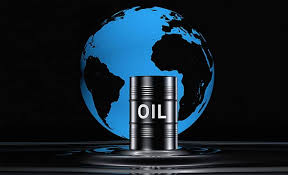
Senior Israeli and U.S. officials have hinted that sustained military pressure could catalyze a collapse of Iran’s current leadership, raising alarms across global energy markets. As Tehran’s political stability hangs in the balance, traders and governments alike are reassessing oil supply forecasts, pricing models and strategic reserve policies. With Iran accounting for roughly 3.5 million barrels per day of crude exports before recent hostilities, any disruption could reverberate across economies still grappling with inflationary pressures and post-pandemic recovery.
Historical Precedents and Price Volatility
Past regime upheavals in major oil producers have driven dramatic spikes in crude benchmarks. After the 1979 Iranian revolution ousted the Shah, global oil prices nearly tripled within a year, igniting a recession that swept North America and Europe. Similarly, Libya’s 2011 uprising saw Brent crude surge from under \$95 to over \$130 per barrel, compounding the strains of the European debt crisis. Analysts warn that a sudden leadership vacuum in Tehran—compounded by retaliatory strikes on regional infrastructure—could eclipse those historic shocks, pushing prices upward of \$120 or even \$150 per barrel in a sustained supply crunch.
Iran’s pre-conflict export capacity rivaled Iraq’s and Kuwait’s combined output, making it the second-largest producer in OPEC by volume. Although prior Western sanctions and recent U.S. airstrikes have dented shipments, Iran still maintains deep reserves and covert sales channels that keep the market closely attuned to its domestic politics. An internally driven regime change could stall exports indefinitely, as new authorities consolidate control, reorient alliances and renegotiate contracts with buyers in China, India and Europe.
In anticipation of sharper price surges, governments are reviewing emergency release protocols for strategic petroleum reserves. The United States, which holds nearly 700 million barrels across multiple sites, has signaled readiness to deploy up to 30 million barrels in cooperation with allies—a buffer designed to temper immediate volatility. Similarly, China, Japan and South Korea maintain national stockpiles sufficient to cover several months of imports, though coordinated draws would require diplomatic consensus and logistical planning.
Refining sectors are also bracing for feedstock tightness. U.S. Gulf Coast and European refineries that rely on medium-sour crude grades could face crude slates shortfalls if Iranian barrels vanish from the market. This would drive up refining margins for lighter oils like West Texas Intermediate, potentially widening the Brent-WTI price spread. In turn, higher diesel and jet-fuel costs could feed through to transportation, freight rates and broader consumer price indices.
Geopolitical Flashpoints in the Persian Gulf
Any erosion of the Iranian regime’s grip may precipitate asymmetric retaliation. Tehran retains a potent arsenal of short-range ballistic missiles capable of striking oil export facilities in neighboring Gulf states, as well as the capacity to disrupt tanker traffic through the Strait of Hormuz—a chokepoint responsible for about 20 percent of global maritime oil movements. Mining operations, electronic warfare jamming of ship transponders, and proxy attacks by Iran-aligned militias could paralyze shipping lanes for weeks or months, far exceeding market assumptions of swift naval intervention.
Regional energy producers from Saudi Arabia to the United Arab Emirates are incrementally boosting output to cushion potential shortages. Riyadh has signaled willingness to tap its excess capacity—estimated at 2 million barrels per day—to stabilize prices, while Abu Dhabi’s ADNOC is exploring rapid expansions of its offshore fields. Yet these measures may only partially offset a multi-million-barrel collapse from Iran, particularly if disruptions coincide with maintenance season cuts in the North Sea or hurricanes in the Gulf of Mexico.
Financial Markets and Investor Sentiment
Global equity and bond markets have already exhibited risk-off behavior in response to heightened military tensions. Oil futures positions show record length on bullish bets, with speculators wagering on spikes north of \$90 per barrel. Insurance premiums for energy shipments through the Persian Gulf have climbed sharply, reflecting perceived threats to vessel safety and cargo security. Meanwhile, sovereign wealth funds in the Gulf Cooperation Council are reallocating portions of their portfolios toward infrastructure and defense assets, hedging against geopolitical risk.
Central banks are monitoring the spillover effects on inflation. For economies like India and Turkey, which import most of their oil, fuel cost inflation could exacerbate current account deficits and place further pressure on local currencies. In Europe, where natural gas prices have already soared due to supply constraints, higher crude costs risk derailing gradual disinflation, potentially delaying interest-rate cuts or prompting renewed quantitative easing.
Beyond immediate price shocks, a regime transition in Tehran could redraw the architecture of global oil alliances. A successor government might seek rapprochement with Western powers to secure economic relief, offering more predictable export volumes in exchange for sanctions relief. Alternatively, hardline elements could align more closely with Eastern buyers, deepening the strategic partnership between Tehran and Beijing. Either scenario would reshape OPEC dynamics—altering output quotas, shifting bargaining power and influencing the cartel’s ability to manage global supply.
Energy diversification strategies will likely accelerate as importers seek to reduce exposure to Middle East volatility. Renewed investment in U.S. shale fields, offshore projects in Brazil and Guyana, and liquefied natural gas infrastructure in the Asia-Pacific region are expected to gain momentum. Concurrently, governments may fast-track renewable energy mandates and strategic mineral sourcing to lessen dependence on hydrocarbons from geopolitically unstable regions.
As markets brace for the third quarter’s developments in Iran, the precarious balance between military escalation and diplomatic engagement will determine the depth and duration of oil-price upheavals. With analysts projecting that even a brief output interruption of one to two million barrels per day could push Brent above \$100, the global economy stands at a critical juncture—where political shifts in Tehran could trigger waves felt from refinery to retail pump.
(Source:www.cnbc.com)
Historical Precedents and Price Volatility
Past regime upheavals in major oil producers have driven dramatic spikes in crude benchmarks. After the 1979 Iranian revolution ousted the Shah, global oil prices nearly tripled within a year, igniting a recession that swept North America and Europe. Similarly, Libya’s 2011 uprising saw Brent crude surge from under \$95 to over \$130 per barrel, compounding the strains of the European debt crisis. Analysts warn that a sudden leadership vacuum in Tehran—compounded by retaliatory strikes on regional infrastructure—could eclipse those historic shocks, pushing prices upward of \$120 or even \$150 per barrel in a sustained supply crunch.
Iran’s pre-conflict export capacity rivaled Iraq’s and Kuwait’s combined output, making it the second-largest producer in OPEC by volume. Although prior Western sanctions and recent U.S. airstrikes have dented shipments, Iran still maintains deep reserves and covert sales channels that keep the market closely attuned to its domestic politics. An internally driven regime change could stall exports indefinitely, as new authorities consolidate control, reorient alliances and renegotiate contracts with buyers in China, India and Europe.
In anticipation of sharper price surges, governments are reviewing emergency release protocols for strategic petroleum reserves. The United States, which holds nearly 700 million barrels across multiple sites, has signaled readiness to deploy up to 30 million barrels in cooperation with allies—a buffer designed to temper immediate volatility. Similarly, China, Japan and South Korea maintain national stockpiles sufficient to cover several months of imports, though coordinated draws would require diplomatic consensus and logistical planning.
Refining sectors are also bracing for feedstock tightness. U.S. Gulf Coast and European refineries that rely on medium-sour crude grades could face crude slates shortfalls if Iranian barrels vanish from the market. This would drive up refining margins for lighter oils like West Texas Intermediate, potentially widening the Brent-WTI price spread. In turn, higher diesel and jet-fuel costs could feed through to transportation, freight rates and broader consumer price indices.
Geopolitical Flashpoints in the Persian Gulf
Any erosion of the Iranian regime’s grip may precipitate asymmetric retaliation. Tehran retains a potent arsenal of short-range ballistic missiles capable of striking oil export facilities in neighboring Gulf states, as well as the capacity to disrupt tanker traffic through the Strait of Hormuz—a chokepoint responsible for about 20 percent of global maritime oil movements. Mining operations, electronic warfare jamming of ship transponders, and proxy attacks by Iran-aligned militias could paralyze shipping lanes for weeks or months, far exceeding market assumptions of swift naval intervention.
Regional energy producers from Saudi Arabia to the United Arab Emirates are incrementally boosting output to cushion potential shortages. Riyadh has signaled willingness to tap its excess capacity—estimated at 2 million barrels per day—to stabilize prices, while Abu Dhabi’s ADNOC is exploring rapid expansions of its offshore fields. Yet these measures may only partially offset a multi-million-barrel collapse from Iran, particularly if disruptions coincide with maintenance season cuts in the North Sea or hurricanes in the Gulf of Mexico.
Financial Markets and Investor Sentiment
Global equity and bond markets have already exhibited risk-off behavior in response to heightened military tensions. Oil futures positions show record length on bullish bets, with speculators wagering on spikes north of \$90 per barrel. Insurance premiums for energy shipments through the Persian Gulf have climbed sharply, reflecting perceived threats to vessel safety and cargo security. Meanwhile, sovereign wealth funds in the Gulf Cooperation Council are reallocating portions of their portfolios toward infrastructure and defense assets, hedging against geopolitical risk.
Central banks are monitoring the spillover effects on inflation. For economies like India and Turkey, which import most of their oil, fuel cost inflation could exacerbate current account deficits and place further pressure on local currencies. In Europe, where natural gas prices have already soared due to supply constraints, higher crude costs risk derailing gradual disinflation, potentially delaying interest-rate cuts or prompting renewed quantitative easing.
Beyond immediate price shocks, a regime transition in Tehran could redraw the architecture of global oil alliances. A successor government might seek rapprochement with Western powers to secure economic relief, offering more predictable export volumes in exchange for sanctions relief. Alternatively, hardline elements could align more closely with Eastern buyers, deepening the strategic partnership between Tehran and Beijing. Either scenario would reshape OPEC dynamics—altering output quotas, shifting bargaining power and influencing the cartel’s ability to manage global supply.
Energy diversification strategies will likely accelerate as importers seek to reduce exposure to Middle East volatility. Renewed investment in U.S. shale fields, offshore projects in Brazil and Guyana, and liquefied natural gas infrastructure in the Asia-Pacific region are expected to gain momentum. Concurrently, governments may fast-track renewable energy mandates and strategic mineral sourcing to lessen dependence on hydrocarbons from geopolitically unstable regions.
As markets brace for the third quarter’s developments in Iran, the precarious balance between military escalation and diplomatic engagement will determine the depth and duration of oil-price upheavals. With analysts projecting that even a brief output interruption of one to two million barrels per day could push Brent above \$100, the global economy stands at a critical juncture—where political shifts in Tehran could trigger waves felt from refinery to retail pump.
(Source:www.cnbc.com)





